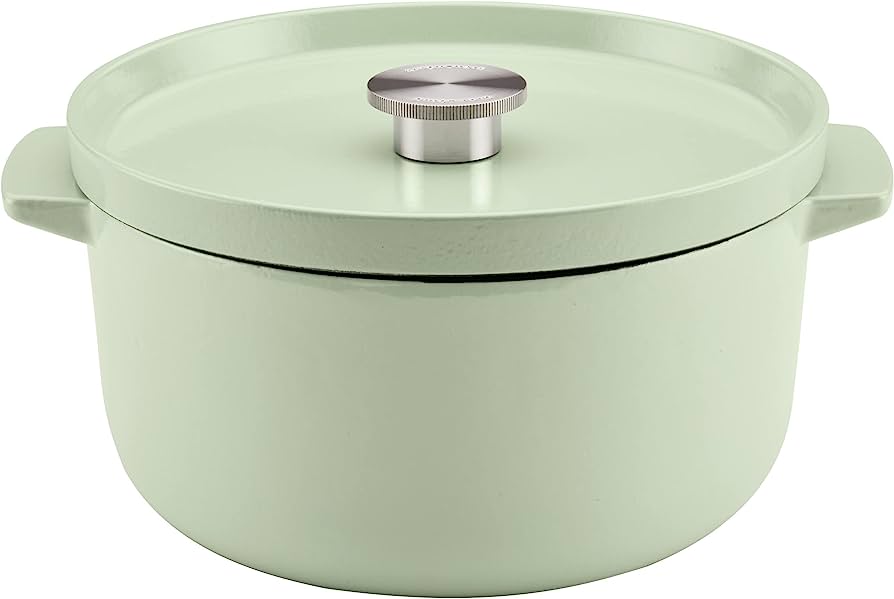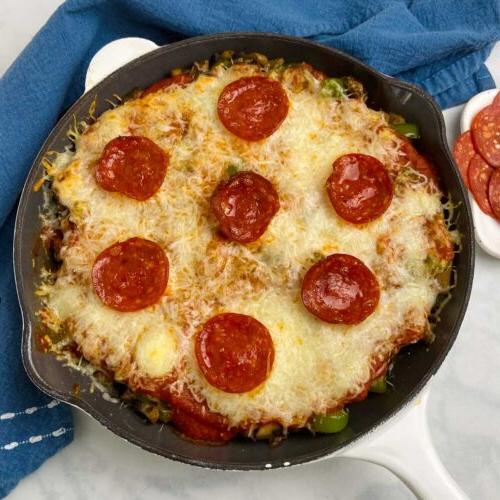The Dutch oven, a beloved and versatile cooking vessel, has stood the test of time as a kitchen essential. With a rich history that spans centuries, the Dutch oven continues to be cherished by professional chefs and home cooks alike. Its enduring popularity can be attributed to its exceptional functionality, durability, and ability to produce exceptional culinary results. This post will be introduction to you about What is a dutch oven and how to use it?
What is a dutch oven?
A Dutch oven is a robust pot with a lid that excels in browning meat and vegetables before being used for simmering on the stovetop or braising in the oven. It is versatile enough to handle tasks like making soup or boiling pasta, and it is even utilized for baking bread. Well-known brands such as Le Creuset and Staub have gained recognition, while Lodge and Cuisinart also offer exceptional options.

Although resembling stockpots in appearance, Dutch ovens have wider bases and slightly shorter yet thicker walls. These features facilitate superior browning and caramelization of ingredients while effectively retaining heat. Additionally, they serve as elegant serving pieces, ensuring that food stays warm on the table. With two short handles on either side, rather than one long handle like traditional pans, Dutch ovens offer balance and stability when transferring in and out of the oven.
Are there any substitutes for a Dutch oven?
- Material: Dutch ovens can be crafted from various materials, including stainless steel and ceramic. However, they are commonly constructed from heavy cast iron, which possesses excellent heat retention and distribution properties. The downside is that it adds weight to the Dutch oven.
- Size: A popular choice for first-time buyers is the five and a half-quart size, suitable for handling family-sized batches without being excessively bulky. Smaller sizes are ideal for individuals or couples, serving as great options for those seeking a second Dutch oven or for camping purposes. On the other hand, larger sizes are perfect for cooking substantial batches and entertaining guests, making them ideal for preparing dishes like chili.
- Enamel coating offers the advantage of easier cleaning and maintenance, while still providing all the benefits of browning associated with cast iron, without the need for seasoning. (Fun fact: Enamel-coated Dutch ovens are technically referred to as French ovens, but their popularity has made them synonymous with the Dutch oven we know and love.) It is advisable to avoid other nonstick materials for Dutch ovens, as they generally do not allow for cooking over high heat or the development of flavorful brown bits on the bottom of the pot.
How do you use a Dutch oven?
Dutch ovens can be utilized similarly to stock pots or saucepans, but what sets them apart is their ability to handle high heat for searing meat and then transitioning to simmering or transferring to the oven. Here are some valuable tips from Hearthcook on making the most of your Dutch oven:
1. Achieve a deep sear by heating the pot first and then adding a small amount of oil before immediately placing the meat inside. This method helps prevent the oil from overheating and burning. Alternatively, you can apply oil directly to the meat.
2. When preparing soups or other dishes that require gentle cooking, keep the Dutch oven tightly covered. Take caution, as the handle of the lid can become hot, particularly if it is made of metal.
3. For sauces, position the lid slightly ajar to allow for some evaporation. However, avoid using the lid completely when aiming to reduce liquid in the final stages of cooking.
4. Dutch ovens can be placed in the oven for extended cooking periods. Remember to use the lid to retain moisture and always handle the pot with oven mitts or dry dish towels.
5. Dutch ovens double as excellent serving dishes, as they keep food hot for an extended period. However, ensure you use a sturdy trivet and inform guests that the pot is hot.
6. To maintain the vibrant finish of enameled cast iron, it is recommended to clean it by hand, regardless of any contrary instructions provided.
By following these tips, you can make the most of your Dutch oven and enjoy its versatile cooking capabilities.

What are some Dutch oven cooking tips?
To brown large quantities of meat, it’s best to do it in batches to avoid overcrowding the pot. This prevents steam buildup, which can make the meat tough. Remember to drain excess grease between batches.
When browning, lightly salt the meat and veggies with kosher salt. Salt helps draw out moisture, resulting in better color development and a more flavorful final dish.
When searing meat and veggies together, sear the meat first and then transfer it to a plate. Reduce the heat and add the veggies to the pot. This allows the vegetables to absorb the flavors from the meat and cook at their own gentle pace.
To gently sweat onions and other veggies, heat the oil in the pot over medium or medium-low heat before adding them.
Ensure that meats and veggies are cut into evenly-sized pieces to ensure even cooking. This way, no one will encounter a chunk that is underdone.
Avoid seasoning the entire pot until after it has finished cooking and you have tasted it. The flavors in simmered or braised dishes become concentrated, and oversalting can occur.
If using tomato paste, add it to the pot before adding any liquid and allow it to cook for a couple of minutes. This enhances the sweetness of the final dish.
After browning the ingredients, deglaze the pot by using wine, vinegar, citrus juice, or a small amount of broth or water. This will loosen the brown bits on the bottom of the pot and enhance the flavor of the food.
For a touch of zest, include a strip of orange peel while simmering a beef or veal stew. Use a vegetable peeler to remove a strip of the rind.
Add a burst of freshness to a hearty stew by incorporating a handful of chopped fresh herbs just before serving. Avoid adding them early on, as long cooking diminishes their flavor. Consider using herbs like basil, tarragon, or cilantro to provide an unexpected accent.
To infuse oil with flavors, add garlic or other aromatics to the pot along with the oil over medium or medium-low heat. Keep a close eye on it to prevent burning.
Whether used in professional kitchens or family homes, the Dutch oven remains a beloved and reliable culinary tool. Its timeless design, exceptional cooking capabilities, and ability to evoke a sense of tradition and heritage make it a cherished piece of cookware for those who appreciate the art and joy of cooking.
